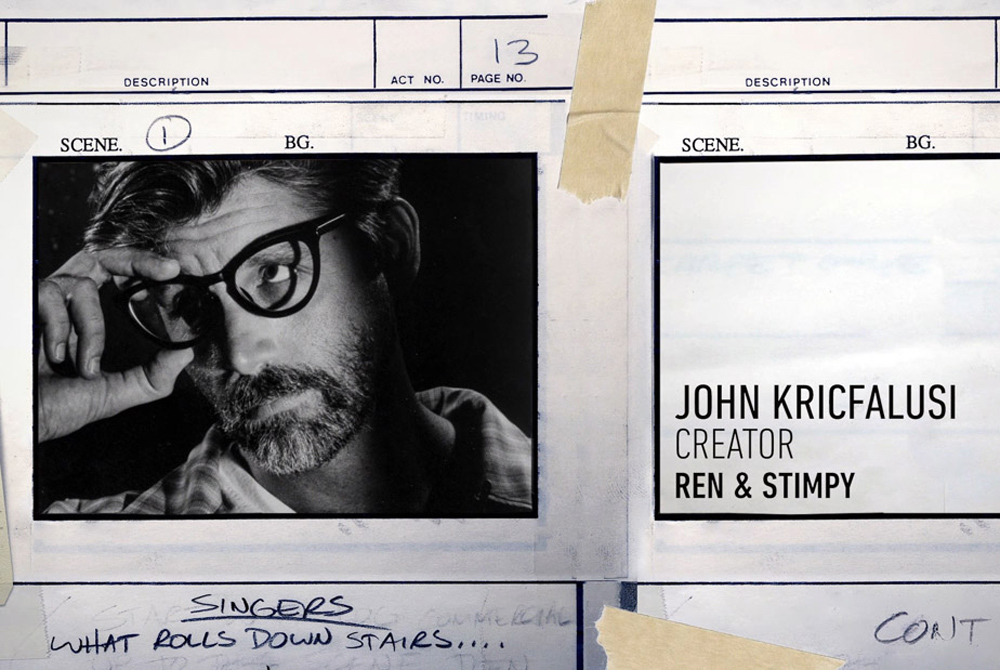It may sound like an obvious observation when someone can be heard saying at the top of “Happy Happy Joy Joy: The Ren & Stimpy Story,” that the show’s creator John Kricfalusi sees ”everything in his life through the lens of a cartoon,” but a necessary one when it becomes evident that he believes the same laws apply to the real world and the one he created with a pen and paper, where the odder the character the better they could fit in, the infliction of pain would only hurt until the next commercial break, and one could spend an eternity being exactly the same age as when they stepped into the frame. Of course when “Ren and Stimpy” became a cultural phenomenon in its first season on Nickelodeon, this belief was affirmed and largely unquestioned when everyone invested in the show’s success weren’t about to point out the flaws in this logic or the resulting reprehensible behavior, but for anyone watching the show, with its gleefully deranged sense of humor and diseased character design that separated itself from anything else on television, let alone kids’ programming, there was a disturbed mind at work and as the saying goes, when people show you who they are, you ought to pay attention.
Directors Ron Cicero and Kimo Easterwood do that and and then some in “Happy Happy Joy Joy,” which is impressive as an engaging and exhaustive oral history of a groundbreaking show, but more so for being able to hold multiple truths about someone as simultaneously admirable and repulsive as Kricfalusi, from advancing the cause of animators as artists by crediting himself in the boldest title card possible while denying the collective work that was crucial to the success of “Ren and Stimpy” by singling himself out, keenly understanding how to build a team while not knowing how to work well with others, and most significantly to his downfall, the notion that his extended adolescence blinded him to the impropriety of having sexual relationships with teenagers who worshipped him when he likely saw himself as not being much older.
There are limited resources at play, visible in the reuse of archival footage because there surely wasn’t more available, but the number of people willing to go in record isn’t one of them, including Kricfalusi, now exiled but still proud, and while the film can feel slightly repetitive with so many talking heads, no stone is left unturned about the unlikely development of Ren and Stimpy from minor characters in another show Kricfalusi was working on, the wild workplace culture that turned toxic at his company Spumco, and eventually his relationship with the 13-year-old Robyn Byrd, who would spend seven years with him in an abusive relationship where she saw her dreams of becoming an animator die.
Many of the people in “Happy Happy Joy Joy” likely haven’t spoken to each other in years and aren’t destined to do so again, but they appear to hold little back in front of the filmmakers, seemingly adamant about creating a definitive record of both work they believe is important as well as breaking a cycle of how it was created when so often unconscionable behavior in the name of art is lauded as being crucial to its creation. As vivid as their experience still clearly is in their mind, it’s conveyed just as vibrantly in a cultural climate where “Happy Happy Joy Joy” reminds of all the behind-the-scenes drama on so many sets revealed in the wake of the #metoo movement as well as reevaluations of autobiographical work veiled as entertainment. While it’s frightening to think of this story as part of an open-ended cycle that persists to this day, the film holds considerable power as a closed loop charting Kricfalusi’s rise and fall, intriguingly celebrated for the same qualities that he would become vilified for when the pretense of artistic expression was dropped, making its preview for what’s perhaps to come for those predatory artists whose exploits have become known a fitting tribute to a show that was always ahead of its time.
“Happy Happy Joy Joy: The Ren and Stimpy Story” will screen at the Sundance Film Festival on January 28th at 3:30 pm at the Library Center Theatre in Park City, January 29th at 11:30 am at the MARC Theatre in Park City, January 30th at 11:30 pm at the Prospector Square Theatre in Park City, February 1st at 6:30 pm at the Rose Wagner Center in Salt Lake City.




